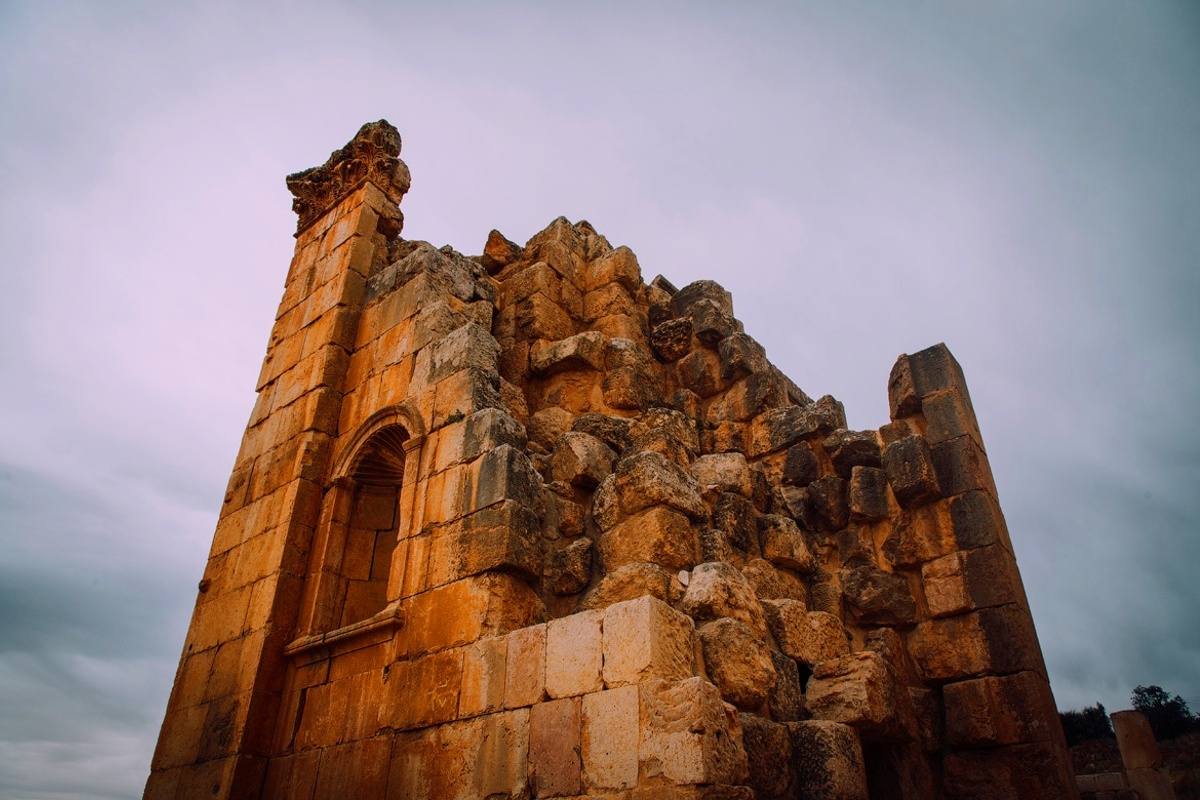+962 7 9635 8199
[email protected]
Jerash Ruins
History & more
The ruined city of Jerash is Jordan’s largest and most interesting Roman site, and a major tourist drawcard right after Petra.
Its imposing ceremonial gates, colonnaded avenues, temples and theaters all speak to the time when this was an important imperial center.
The ruined city of Jerash OPENING HOURS
Summer
Ticketing: 8:00 am – 7:00 pm.
Sites and Museums: 8:00 AM – 8:00 PM.
Winter
Ticketing: 8:00 am – 4:30 pm.
Sites and Museums: 8:00 am – 5:30 pm.
History of Jerash in details

Neolithic age
Archaeologists have found ruins of settlements dating back to the Neolithic Age. Moreover, in August 2015, an archaeological excavation team from the University of Jordan unearthed two human skulls that date back to the Neolithic period (7500–5500 BC) at a site in Jerash, which forms solid evidence of inhabitance of Jordan in that period especially with the existence of ‘Ain Ghazal Neolithic settlement in Amman. The importance of the discovery lies in the rarity of the skulls, as archaeologists estimate that a maximum of 12 sites across the world contain similar human remains.

Bronze age
Evidence of settlements dating to the Bronze Age (3200 BC – 1200 BC) have been found in the region.
Only one fragment of Early Bronze Age material has so far been documented, and there is no Iron Age material.

Hellenistic period
Jerash is the site of the ruins of the Greco-Roman city of Gerasa, also referred to as Antioch on the Golden River.
Ancient Greek inscriptions from the city support that the city was founded by Alexander the Great and his general Perdiccas, who allegedly settled aged Macedonian soldiers there during the spring of 331 BC, when he left Egypt and crossed Syria en route to Mesopotamia.
However, other sources, namely the city’s former name of “Antioch on the Chrysorrhoas, point to a founding by Seleucid King Antioch IV, while still others attribute the founding to Ptolemy II of Egypt.

Roman period
After the Roman conquest in 63 BC, Jerash and the land surrounding it were annexed to the Roman province of Syria, and later joined the Decapolis league of cities. The historian Josephus mentions the city as being principally inhabited by Syrians, and also having a small Jewish community.
In AD 106, Jerash was absorbed into the Roman province of Arabia, which included the cities of Philadelphia (modern day Amman), Petra and Bostra. The Romans ensured security and peace in this area, which enabled its people to devote their efforts and time to economic development and encouraged civic building activity.
Hellenistic period
The city finally reached a size of about 800,000 square meters within its walls. Beneath the foundations of a Byzantine church that was built in Jerash in AD 530 there was discovered a mosaic floor with ancient Greek and Hebrew-Aramaic inscriptions.
The presence of the Hebrew-Aramaic script has led scholars to think that the place was formerly a synagogue, before being converted into a church.
Jerash was invaded by Persian Sassanids in AD 614. Few years later, the Byzantine army was defeated in the battle of the Yarmouk river by the invading Muslim forces and these territories became part of the Umayyad Caliphate.
Early Muslim period
The city flourished during the Umayyad Caliphate. It had numerous shops and issued coins with the mint named “Jerash” in Arabic. It was also a center for ceramic manufacture; moulded ceramic lamps had Arabic inscriptions that showed the potter’s name and Jerash as the place of manufacture.
The large mosque and several churches that continued to be used as places of worship, indicated that during the Umayyad period Jerash had a sizable Muslim community that co-existed with the Christians.
In CE 749, a devastating earthquake destroyed much of Jerash and its surroundings.
Crusader period
In the early 12th century a fortress was built by a garrison stationed in the area by the Zahir ad-Din Toghtekin, atabeg of Damascus. Baldwin II, King of Jerusalem, captured and burned the fortress in 1121–1122 CE.
Although the site of the fortification has often been identified with the ruins of the temple of Artemis, there is no evidence of the creation of a fortification in the temple in the 12th century. The location of this fort is probably to be found at the highest point of the city walls, in the north-eastern hills.
Mid to Late Muslim period
Small settlements continued in Jerash during the Mamluk Sultanate, and Ottoman periods. This occurred particularly in the Northwest Quarter and around the Temple of Zeus, where several Middle Islamic/Mamluk domestic structures have now been excavated.
In 1596, during the Ottoman era, Jerash was noted in the census as Jaras, being located in the nahiya of Bani Ilwan in the liwa of Ajloun. It had a population of 12 Muslim households. They paid a fixed tax-rate of 25% on various agricultural products, including wheat, barley, olive trees/fruit trees, goats and beehives, in addition to occasional revenues and a press for olive oil/grape syrup; a total of 6,000 akçe.
There are few places in the world where one has the opportunity to see history re-inacted, but only in the ancient hippodrome of Jerash can you witness chariots race or gladiators in full regalia clash on the site where Roman athletes and warriors one walked and fought.
Hidden for hundreds of years under the shifting sands of Jordan, picturesque ruins are all that remains of a once-great ancient city that saw the likes of Alexander the Great, the emperors Trajan and Hadrian, and the mathematician Nichomachas.
Most of the ancient city of Gerasa was destroyed in an earthquake in 749 AD, leading to comparisons to another great Roman city: Pompeii. The ruins were re-discovered in 1806 by German explorer Ulrich Jasper Seetzen.